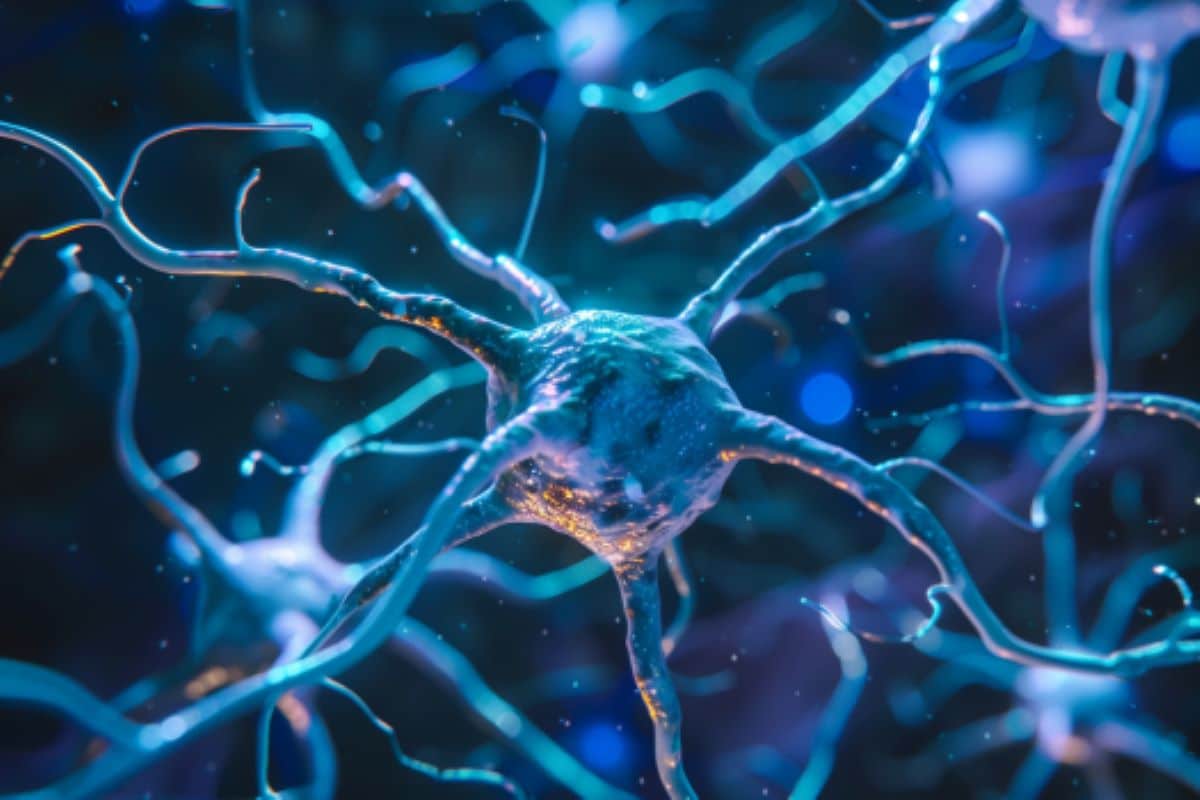Summary: Researchers discovered that the brain can significantly influence the immune system, particularly its inflammatory responses. The study utilized mice to show that the brain can detect and adjust levels of inflammation via a specific brain circuit involving the caudal nucleus of the solitary tract.
This brain-immune interaction offers potential new targets for treating autoimmune diseases and inflammatory disorders by modulating this brain circuit. The findings not only highlight a critical body-brain axis but also suggest possible interventions for a wide range of immune-related conditions.
Key Facts:
- The study identified a brain circuit that can modulate immune responses, influencing both pro-inflammatory and anti-inflammatory activities.
- Activation of this circuit could significantly reduce inflammation, suggesting a potential therapeutic target for autoimmune and inflammatory diseases.
- The research points to the caudal nucleus of the solitary tract in the brainstem as a key area involved in regulating immune responses through the vagus nerve.
Source: Columbia University
The brain can direct the immune system to an unexpected degree, capable of detecting, ramping up and tamping down inflammation, shows a new study in mice from researchers at Columbia’s Zuckerman Institute.
“The brain is the center of our thoughts, emotions, memories and feelings,” said Hao Jin, PhD, a co-first author of the study published online today in Nature.
“Thanks to great advances in circuit tracking and single-cell technology, we now know the brain does far more than that. It is monitoring the function of every system in the body.”

Future research could identify drugs that can target this newfound brain circuit to help treat a vast range of disorders and diseases in which the immune system goes haywire.
“This new discovery could provide an exciting therapeutic venue to control inflammation and immunity,” said Charles S. Zuker, PhD, the study’s senior author, a principal investigator at Columbia’s Zuckerman Institute and a Howard Hughes Medical Institute investigator.
Recent work from the Zuker lab and other groups is revealing the importance of the body-brain axis, a vital pathway that conveys data between the organs and the brain. For example, Dr. Zuker and his colleagues discovered that sugar and fat entering the gut use the body-brain axis to drive the craving and strong appetite for sugary and fatty foods.
“We found all these ways in which the body is informing the brain about the body’s current state,” said co-first author Mengtong Li, PhD, a postdoctoral researcher in the Zuker lab. “We wanted to understand how much farther the brain’s knowledge and control of the body’s biology went.”
The scientists looked for connections the brain might have with inflammation and innate immunity, the defense system shared by all animals and the most ancient component of the immune system. Whereas the adaptive immune system remembers previous encounters with intruders to help it resist them if they invade again, the innate immune system attacks anything with common traits of germs.
The relative simplicity of innate immunity lets it respond to new insults more quickly than adaptive immunity.
Prior studies in humans revealed that electrically stimulating the vagus nerve — a bundle of thousands of nerve fibers linking the brain and the body’s internal organs — could reduce the response linked to a specific inflammatory molecule.
However, much remained unknown about the nature of this body-brain system: for instance, the generality of the brain’s modulation of immunity and the inflammatory response, the selective lines of communication between the body and the brain, the logic of the underlying neural circuit, and the identity of the vagal and brain components that monitor and regulate inflammation.
The Zuker lab turned to a bacterial compound that sets off innate immune responses. The scientists found that giving this molecule to mice activated the caudal nucleus of the solitary tract, or cNST, which is tucked inside the brainstem. The cNST plays a major role in the body-brain axis and is the primary target of the vagus nerve.
The scientists showed that chemically suppressing the cNST resulted in an out-of-control inflammatory response to the immune insult: levels of pro-inflammatory molecules released by the immune system were more than three times higher than usual, and levels of anti-inflammatory immune compounds were roughly three times lower than normal.
In contrast, artificially activating the cNST reduced pro-inflammatory molecule levels by nearly 70 percent and increased anti-inflammatory chemical levels almost tenfold.
“Similar to a thermostat, this newfound brain circuit helps increase or decrease inflammatory responses to keep the body responding in a healthy manner,” said Dr. Jin, who started this study as a postdoctoral researcher in Dr. Zuker’s lab. Dr. Jin is now a tenure track investigator at the National Institute of Allergy and Infectious Diseases.
“In retrospect, it makes sense to have a master arbiter controlling this vital response.”
Previous vagus nerve stimulation research in humans suggests the findings go beyond mice. The new research may also be in line with thousands of years of thought on the potential importance of the mind on the body.
“A lot of psychosomatic effects could actually be linked to brain circuits telling your body something,” Dr. Jin noted.
The scientists identified the specific groups of neurons in the vagus nerve and in the cNST that help detect and control pro- and anti-inflammatory activity.
“This opens up a new window into how the brain monitors and modulates body physiology,” said Dr. Zuker, a professor of biochemistry, molecular biophysics and neuroscience at Columbia’s Vagelos College of Physicians and Surgeons.
Discovering ways to control this newfound brain circuit may lead to novel therapies for common auto-immune diseases such as rheumatoid arthritis, type I diabetes, multiple sclerosis, neurodegenerative diseases, lupus, inflammatory bowel disease and Crohn’s disease, as well as conditions such as long COVID syndrome, immune rejection of transplanted organs, and the potentially deadly outbursts known as cytokine storms that COVID infections can trigger.
Autoimmune diseases may affect roughly one in 10 individuals, a 2023 Lancet study suggested. In the United States alone, autoimmune diseases may cost the economy $100 billion annually, a figure that may be a gross underestimate, according to the Autoimmune Association.
Harnessing the activity of this circuit may make a difference across a broad range of conditions affecting the immune system, and help treat dysregulated inflammatory states in people suffering from immune diseases and disorders, Drs. Jin and Li said.
About this neurology and immunity research news
Author: Ivan Amato
Source: Columbia University
Contact: Ivan Amato – Columbia University
Image: The image is credited to Neuroscience News
Original Research: Closed access.
“A body–brain circuit that regulates body inflammatory responses” by Hao Jin et al. Nature
Abstract
A body–brain circuit that regulates body inflammatory responses
The body-brain axis is emerging as a principal conductor of organismal physiology. It senses and controls organ function, metabolism and nutritional state.
Here, we show that a peripheral immune insult powerfully activates the body-brain axis to regulate immune responses.
We demonstrate that pro- and anti-inflammatory cytokines communicate with distinct populations of vagal neurons to inform the brain of an emerging inflammatory response. In turn, the brain tightly modulates the course of the peripheral immune response.
Genetic silencing of this body-to-brain circuit produced unregulated and out-of-control inflammatory responses. By contrast, activating, rather than silencing, this circuit affords exceptional neural control of immune responses.
We used single-cell RNA sequencing, combined with functional imaging, to identify the circuit components of this neuro-immune axis, and showed that its selective manipulation can effectively suppress the pro-inflammatory response while enhancing an anti-inflammatory state.
The brain-evoked transformation of the course of an immune response offers new possibilities in the modulation of a wide range of immune disorders, from autoimmune diseases to cytokine storm and shock.






